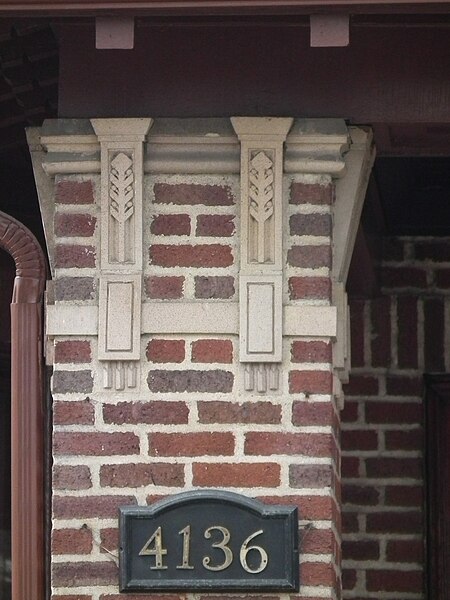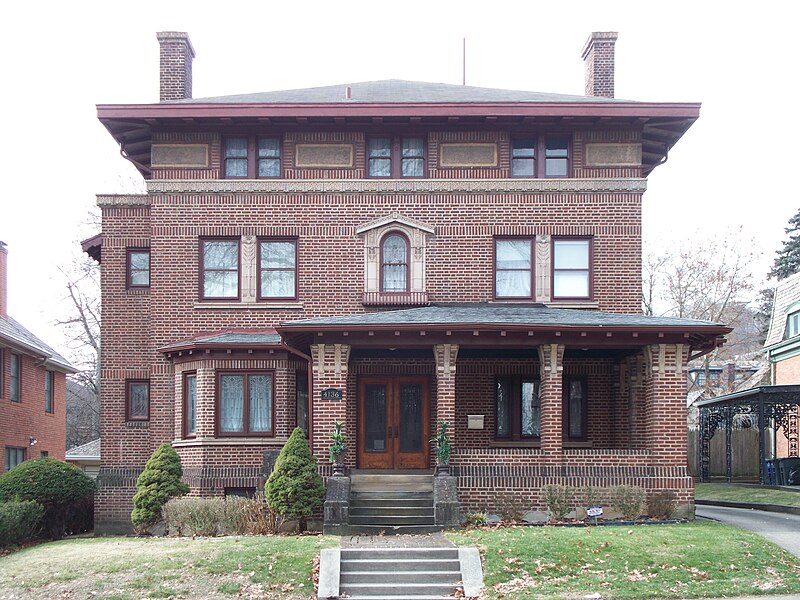
Built in 1903, this early skyscraper was designed by Alden & Harlow, who festooned it with terra cotta.
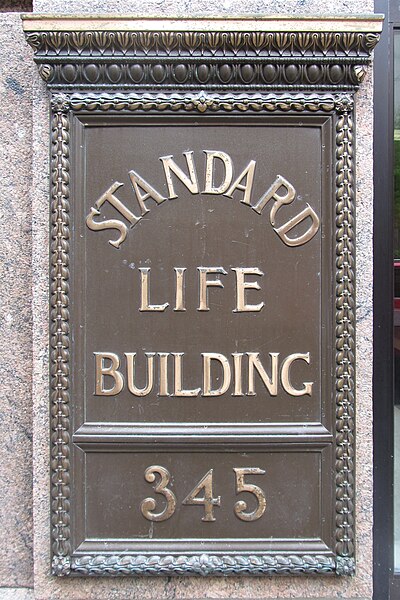





Built in 1903, this early skyscraper was designed by Alden & Harlow, who festooned it with terra cotta.





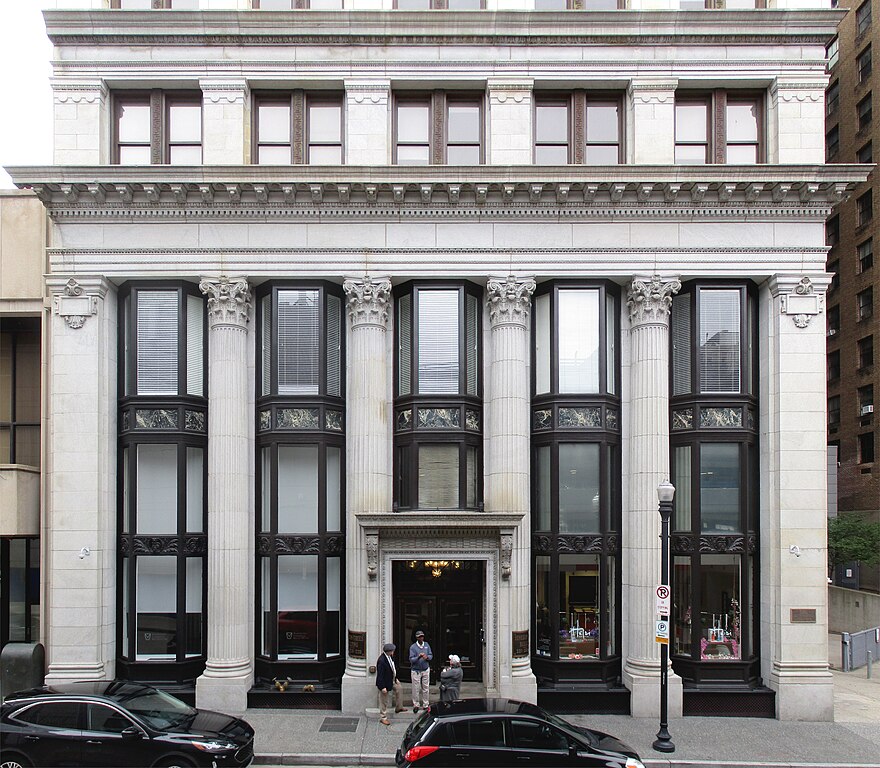
Built in 1905 as the Machesney Building, this early skyscraper was designed by Thomas Scott, who kept his office there, which doubtless made a strong first impression on potential clients. It was renamed eight years later when it was bought by a pair of oil barons, and it has been the Benedum-Trees Building ever since.
Here we see the generous base of the building, with three-storey Corinthian pilasters and huge windows. Above it is the “bosses’ floor.” For a short lesson in reading a Beaux Arts skyscraper like this, see our article on the West Penn Building.
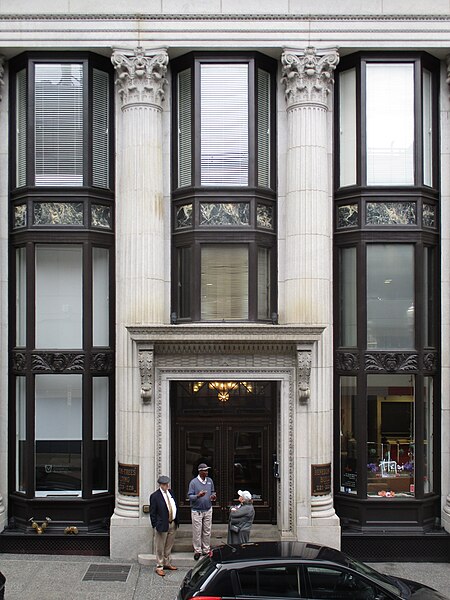
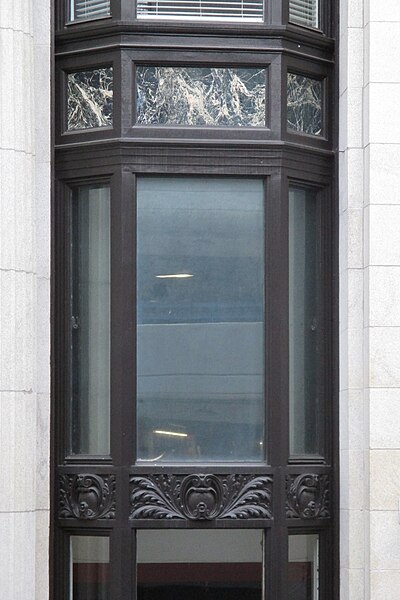

This row of stone-fronted houses is a good example of late-Victorian eclecticism. The heavy rustic stone and elaborate foliage decorations say “Romanesque,” but the porch columns have “modern Ionic” capitals typical of the Renaissance. And it all works together just fine, though it might give an architectural pedant hives.


The stonecarving was probably done by Achille Giammartini, who lived a few blocks away on Page Street.

Hiding in the shadows is a whimsical grotesque face that may remind us of somebody we know.
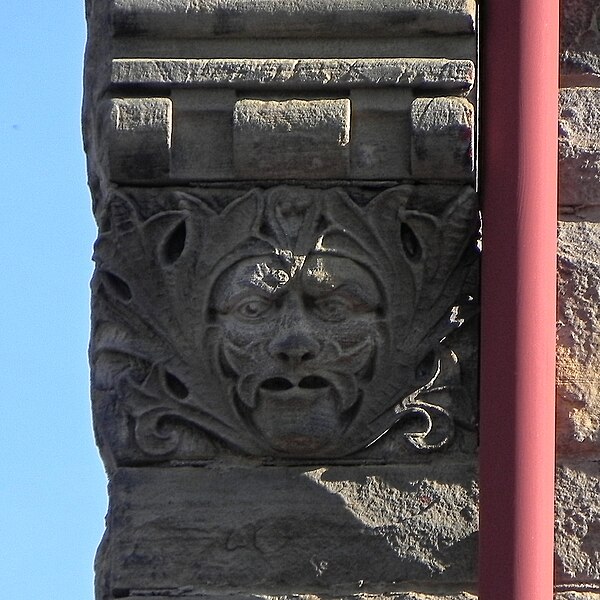

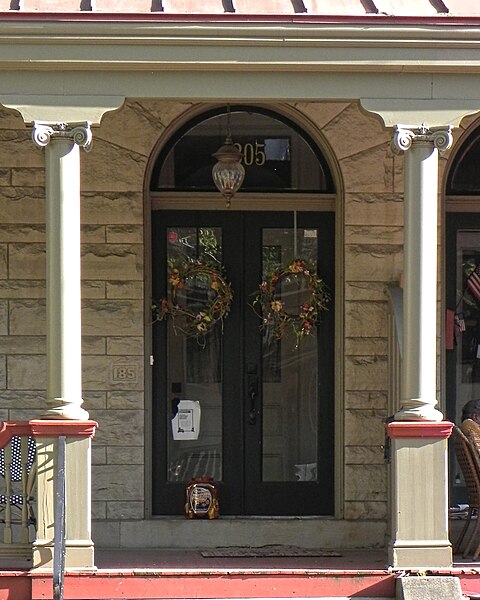
Note the old address, 185, carved in stone beside the door to what is now 1305 Liverpool Street. The addresses in Manchester changed at about the time Allegheny was taken into Pittsburgh.


Louis Stevens was best known as a designer of romantic châteaux and French cottages for the well-to-do, but if you asked him for a Renaissance palace, he was up to the task. The Harry J. Parker house was built in 1915 on a prominent corner where Bayard Street meets Bigelow Boulevard, and it is a standout in a neighborhood of splendid houses.




Originally this house on Tennyson Avenue was a Renaissance palace with a little whiff of Prairie Style. It was built in 1910 for Martin G. Bauer, Jr. The architect, Maximilian Nirdlinger, drew it in the common shape of the Pittsburgh Renaissance palace, with exaggerated brackets that look westward to Chicago but also recall the Italianate houses of a generation earlier.
At some point, the owners decided what they really wanted was a Southern plantation mansion. They amputated the porch and left a house-wide scar filled in with stucco that only draws attention to it, and then added a two-storey round portico, spending a lot of money to leave the house looking socked in the face.
We can imagine what the house looked like with the porch intact. But we don’t have to work very hard at it, because across the street is a very similar house, built one year earlier and designed by the same architect:

Here we see how the houses were both intended to look. The front porch emphasizes the breadth of the house, making it look long and low in spite of its three floors.


Now we can turn back to the Bauer house and see what it was trying to be. In old Pa Pitt’s opinion, it is always best to stick to the original style of a house in making additions or alterations. Any attempt to make the house into something it is not draws attention to the fact that it is not that thing.


Here we have two apartment buildings on more or less the same plan, but differing in their details.


The Shirley has two immediately striking features. First, the broad round arch at the entrance:
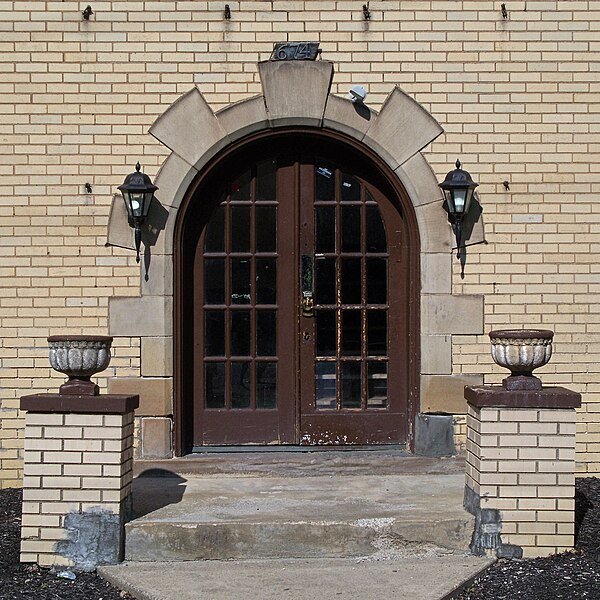
Second, the two-storey window (interrupted by inscription) in the stairwell, which also terminates with an arch.
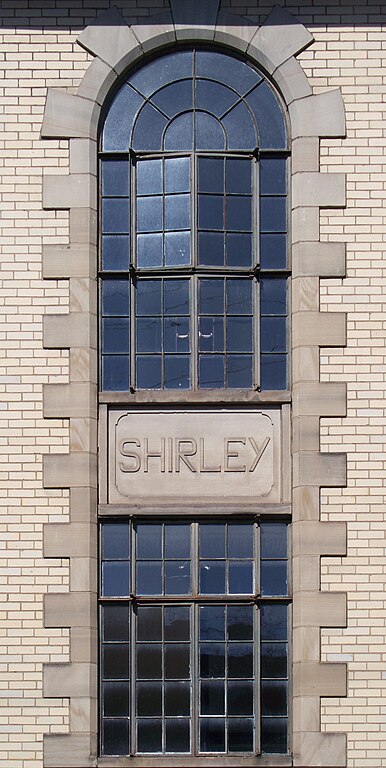
Its neighbor (originally named Harmon: see below) uses contrasts in color to create a striking appearance.


The entrance is more classical, and instead of one tall window, the stairwell has two arched windows filled with colorful art glass.

Addendum: A 1934 plat map shows that the building on the left was originally called “Harmon.”


This building—a remnant of the pre-skyscraper age on Seventh Avenue—has been many things in its life. These days it is known only by its address. For a long while it was the Federated Investors Building. In 1923 it belonged to the Stevens & Foster Co., which Father Pitt believes was a maker of steel pens. In 1910 it was marked Geo. A. Kelly Co. Wholesale Drugs. Before that, it belonged to J. N. McCullough. It was built in the 1890s on the site of the First United Presbyterian Church, whose congregation had moved to the East End.
This is another one of those pictures where old Pa Pitt has created an impossible perspective by distorting different sections of the picture differently. Sometimes the best way to tell the truth about a building is with a little bit of fakery.
Addendum: The architect appears to have been George Orth & Brothers. Source: Philadelphia Real Estate Record and Builders’ Guide, May 19, 1897: “On the site of the First U. P. Church on Seventh avenue, a ten-story brick building will be erected by Mr. Harry Darlington. The plans will be made by Architects Geo. Orth & Bros., Stevenson building.” The building as it stands is four floors shorter, but buildings often shrank between initial announcement and final construction.
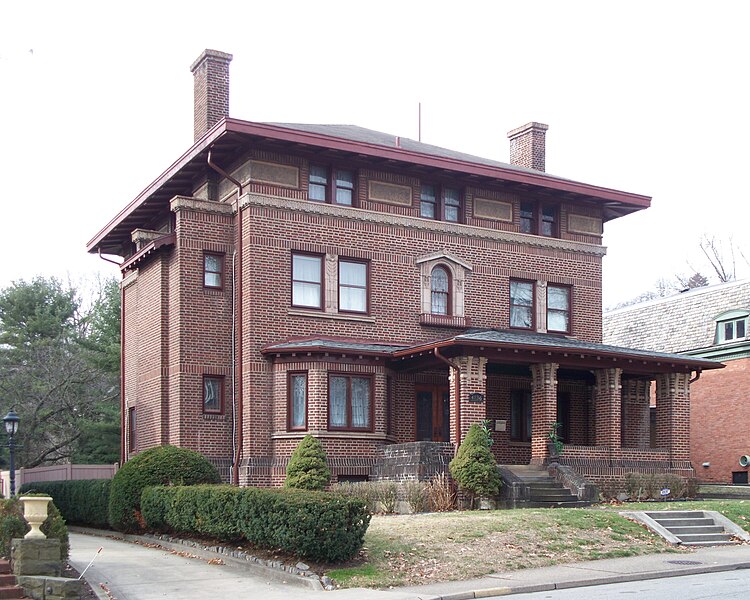
For their client Godfrey Stengel, Kiehnel & Elliott took the basic form of a typical Pittsburgh Renaissance palace, which gave them a box to work with—Richard Kiehnel’s favorite shape. To that canvas the architects applied their trademark Jugendstil-infiltrated-by-Prairie-school decorations. The house was built in 1913, and it must have looked very modern—yet it fits perfectly in Schenley Farms, where other more traditional Renaissance palaces have almost the same shape without the Jugendstil.


